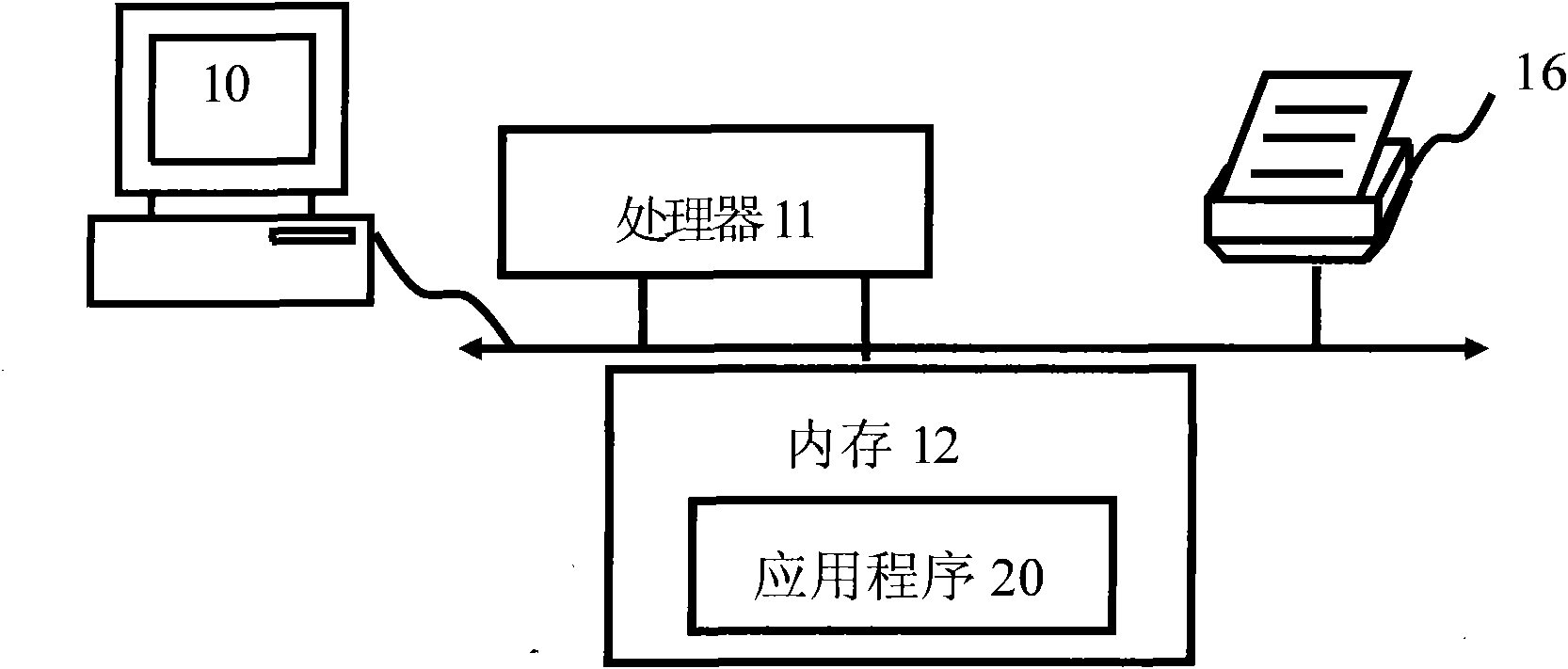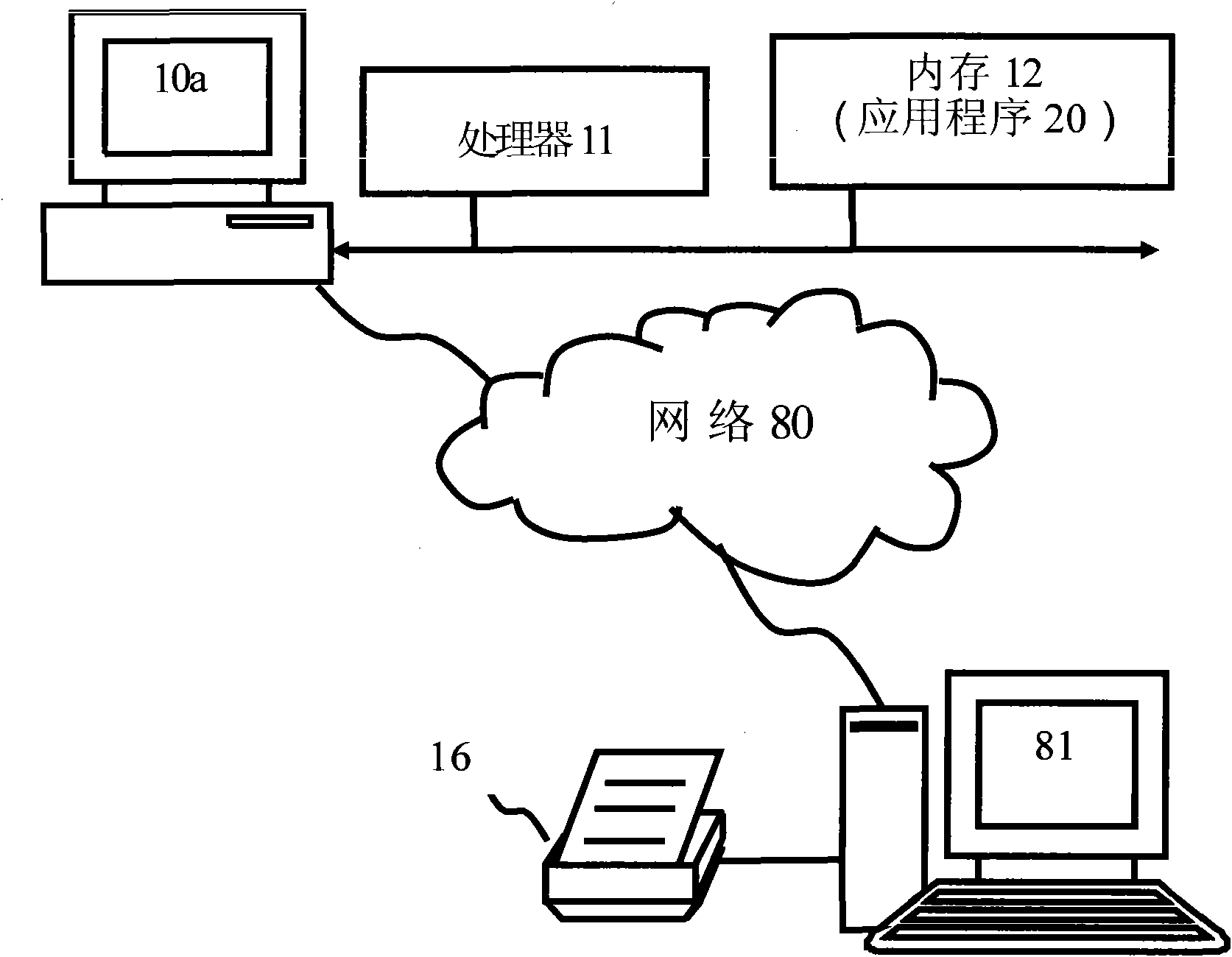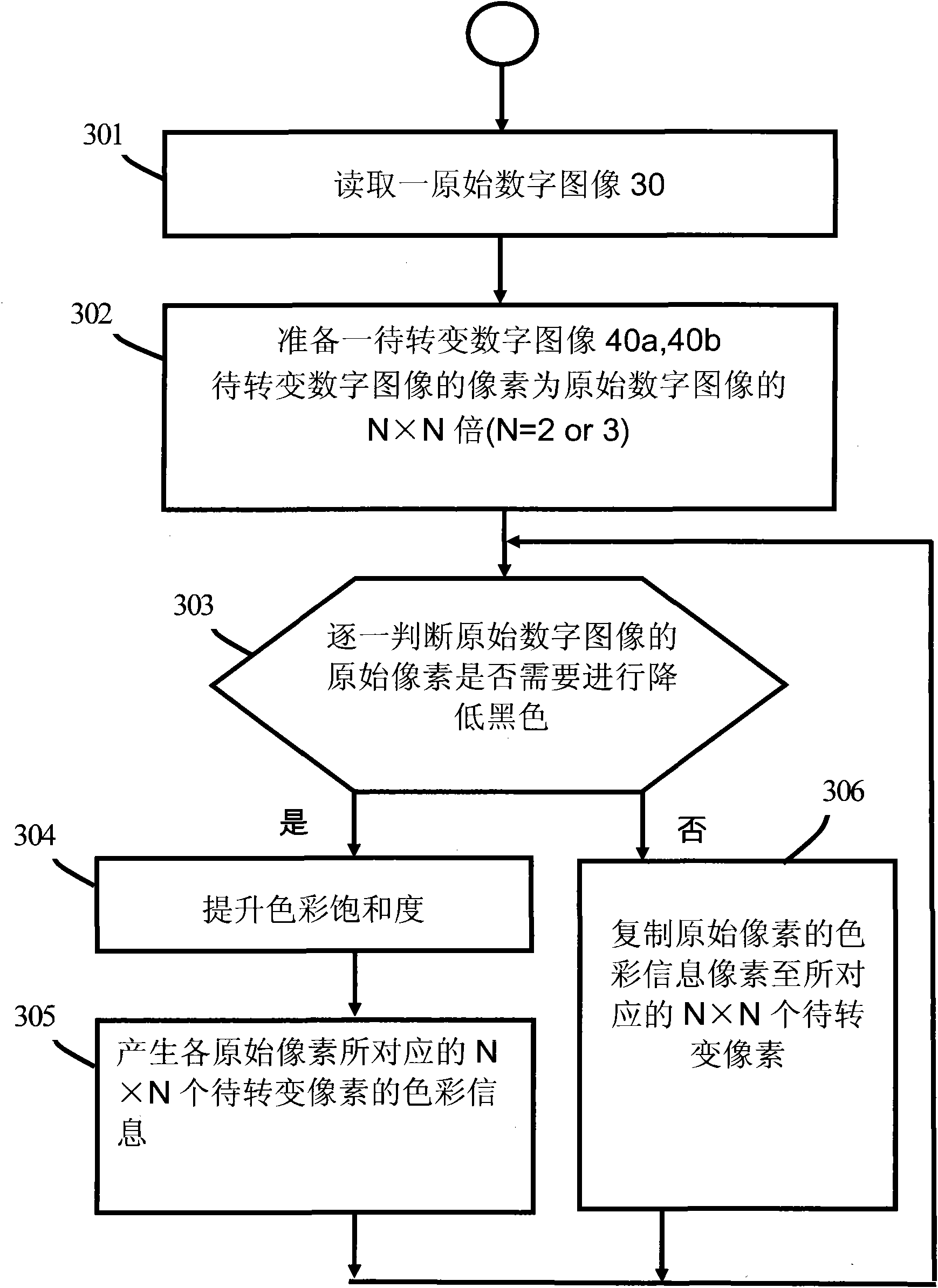Method for lowering black content in digital image
A digital image, black technology, applied in the field of reducing the black content in digital images, can solve problems such as top-heavy images
- Summary
- Abstract
- Description
- Claims
- Application Information
AI Technical Summary
Problems solved by technology
Method used
Image
Examples
no. 1 example
[0101] please see Figure 10 The original pixel 31a corresponds to four pixels 41j~41n to be converted, and its color information can be found in Figure 11 example.
[0102] The color information of the 2 pixels to be transformed in 41j and 41n is: R=F and G=F, and B is equal to the B value of the original pixel 31a;
[0103] The color information of the two pixels 41k and 41m to be converted is: B=F, and the R value and G value are equal to the R value and G value of the original pixel 31a.
[0104] That is, for the RGB value of the original pixel 31a, two of the to-be-transformed pixels present the B value of the original pixel 31a, and the other two to-be-converted pixels present the R and G values of the original pixel 31a. Since at least one color information of each of the pixels 41j-41n to be converted has a full value (equal to F), there will be no K value when printing (the printer will convert to CMYK system). Figure 11 The embodiment is to ensure that the K valu
no. 2 example
[0108] please see Figure 10 The original pixel 31a corresponds to four pixels 41j~41n to be converted, and its color information can be found in Figure 12 example.
[0109] The color information of the two pixels to be transformed in 41j and 41n is: G=F and B=F, and R is equal to the R value of the original pixel 31a;
[0110] The color information of the two pixels 41k and 41m to be transformed is: R=F, and the G value and B value are equal to the G value and B value of the original pixel 31a.
[0111] That is, for the RGB value of the original pixel 31a, the two to-be-transformed pixels present the R value of the original pixel 31a, while the other two to-be-converted pixels present the G and B values of the original pixel 31a. Since at least one color information of each of the pixels 41j-41n to be converted is full (equal to F), no K value will appear when printing (the printer will convert to CMYK system). Figure 12 The embodiment is to ensure that the K value is rem
no. 3 example
[0115] please see Figure 10 The original pixel 31a corresponds to four pixels to be converted 41j~41n, and its color information can be found in Figure 13 example.
[0116] The color information of the 2 pixels to be transformed in 41j and 41n is: B=F and R=F, and R is equal to the G value of the original pixel 31a;
[0117] The color information of the two pixels 41k and 41m to be transformed is: G=F, and the B value and R value are equal to the B value and R value of the original pixel 31a.
[0118] That is, for the RGB value of the original pixel 31a, the G value of the original pixel 31a is represented by the two pixels to be converted, and the B value and R value of the original pixel 31a are represented by the other two pixels to be converted. Since at least one color information in each of the pixels 41j-41n to be converted is full (equal to F), there will be no K value when printing (the printer will convert to CMYK system). Figure 12 The embodiment is to ensure that
PUM
 Login to view more
Login to view more Abstract
Description
Claims
Application Information
 Login to view more
Login to view more - R&D Engineer
- R&D Manager
- IP Professional
- Industry Leading Data Capabilities
- Powerful AI technology
- Patent DNA Extraction
Browse by: Latest US Patents, China's latest patents, Technical Efficacy Thesaurus, Application Domain, Technology Topic.
© 2024 PatSnap. All rights reserved.Legal|Privacy policy|Modern Slavery Act Transparency Statement|Sitemap



